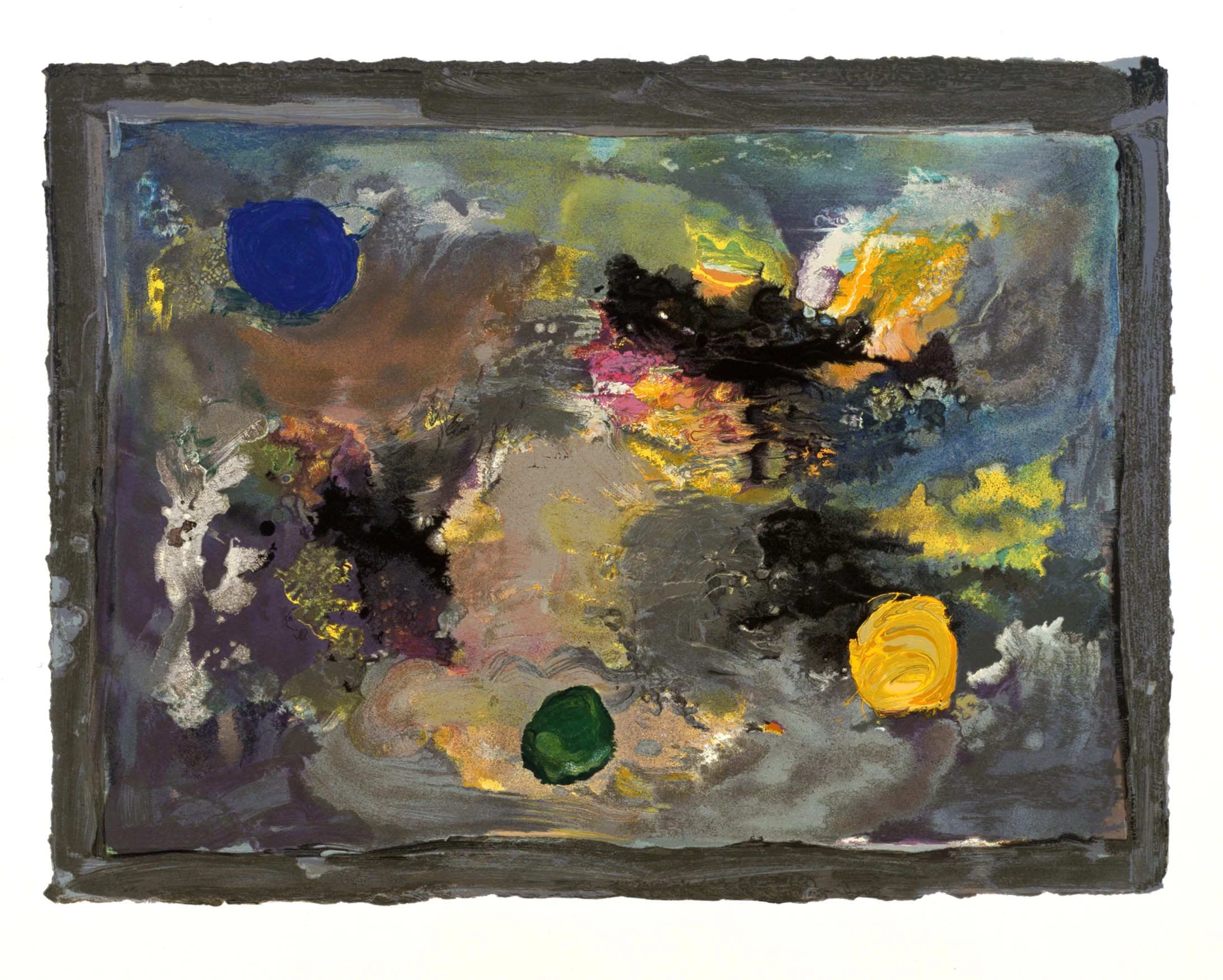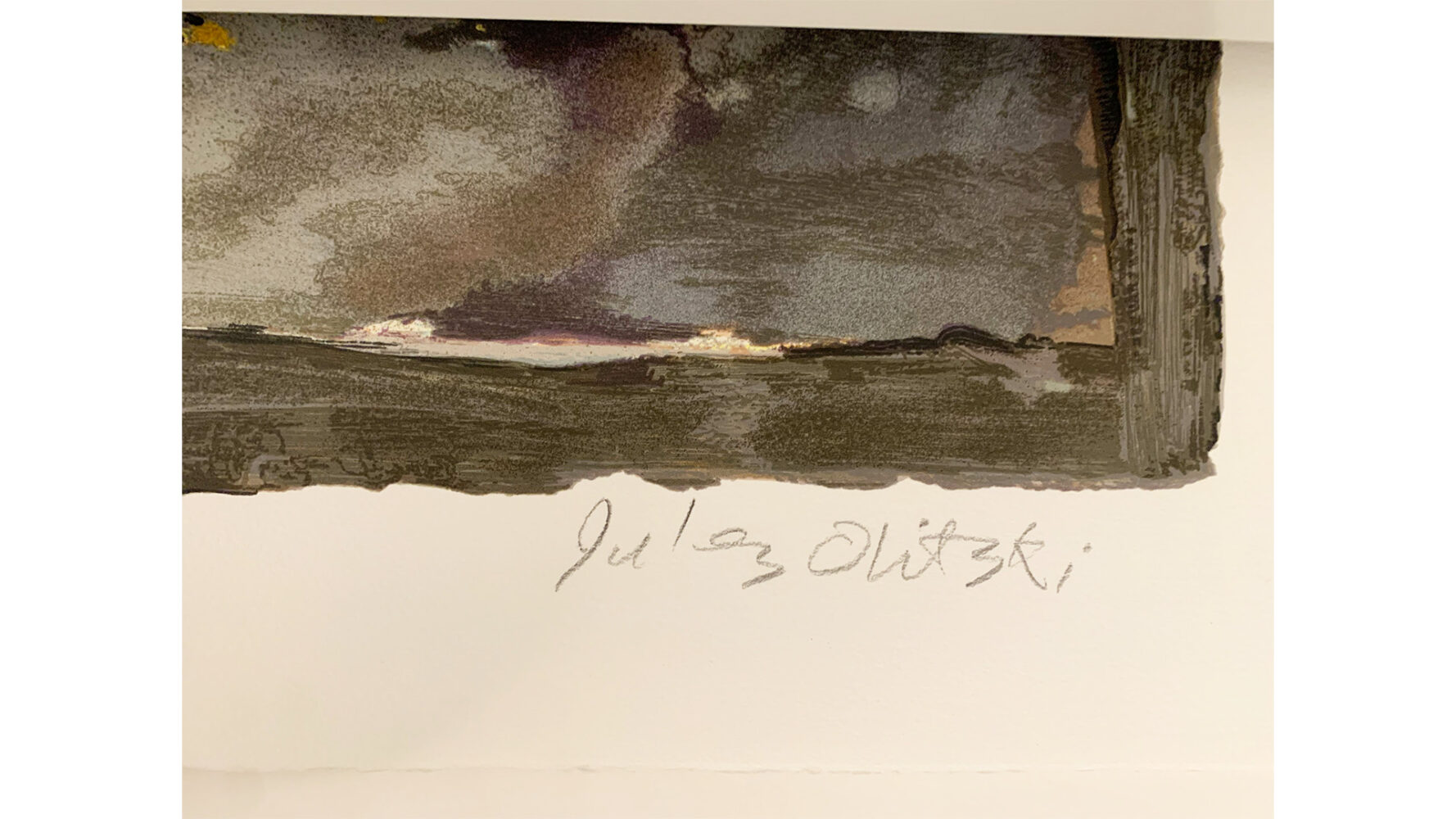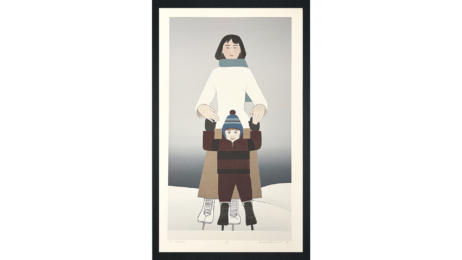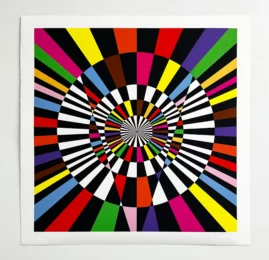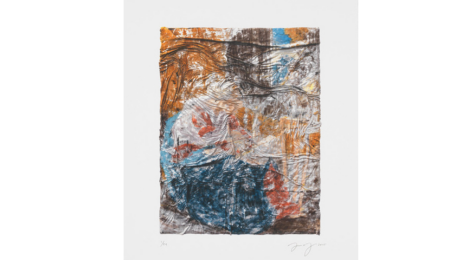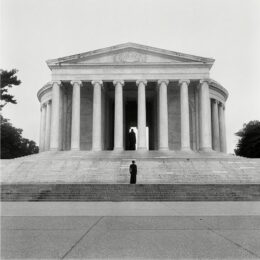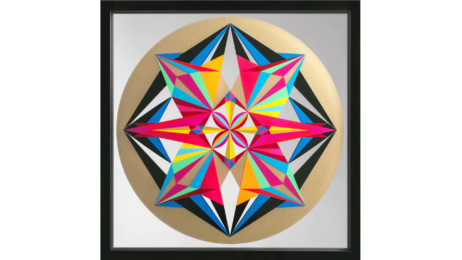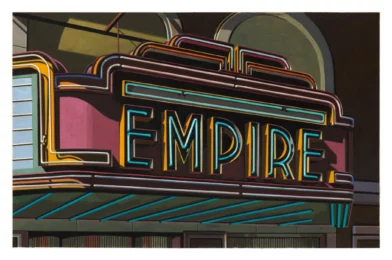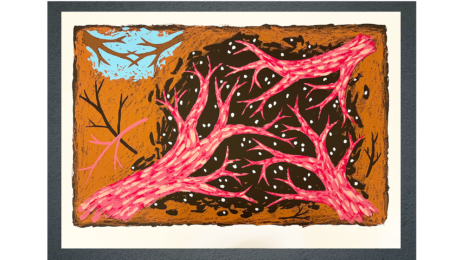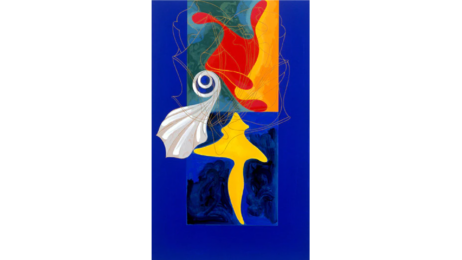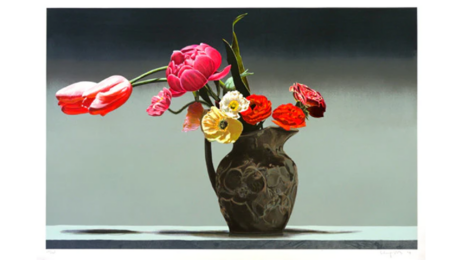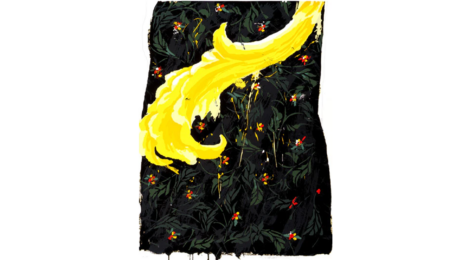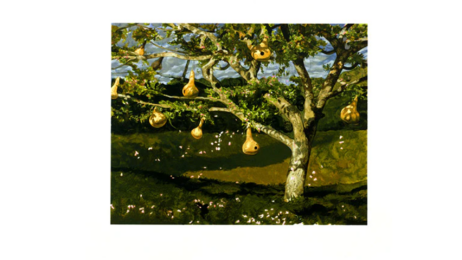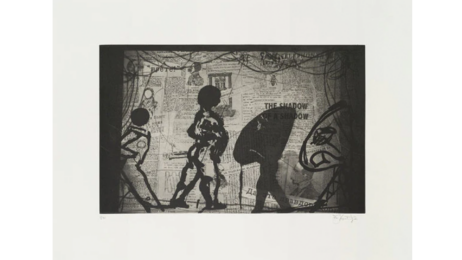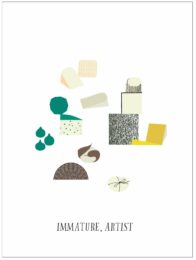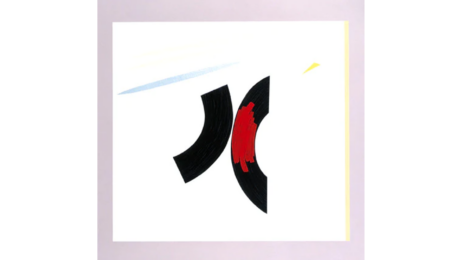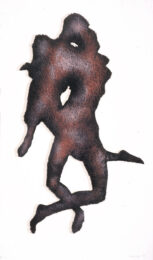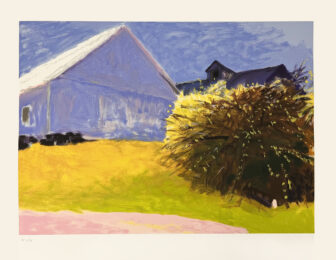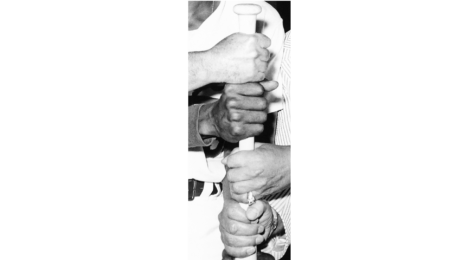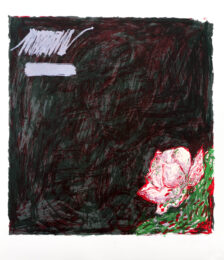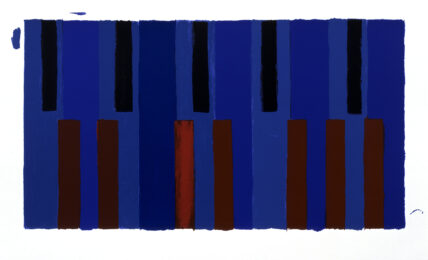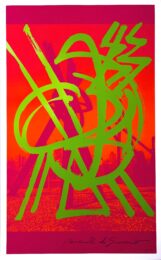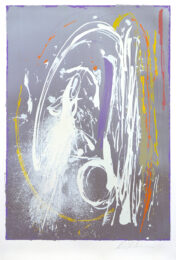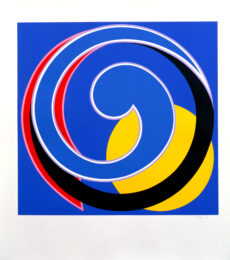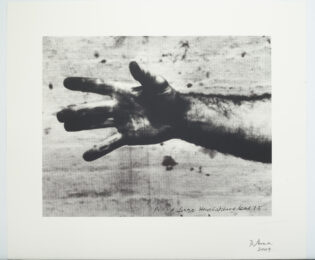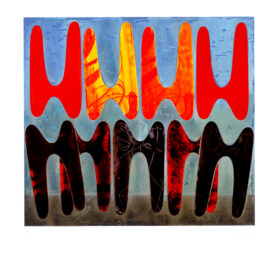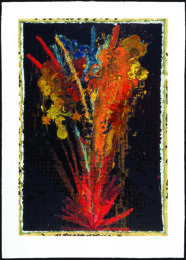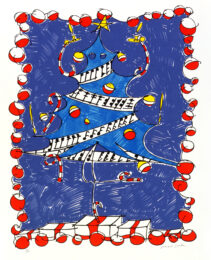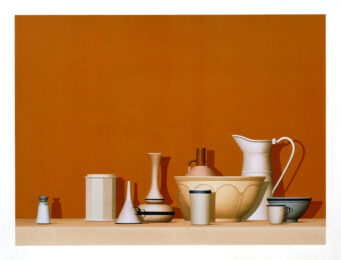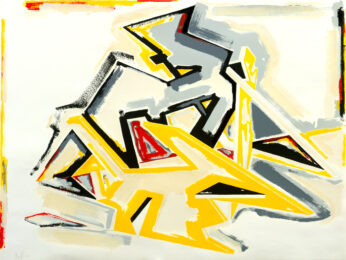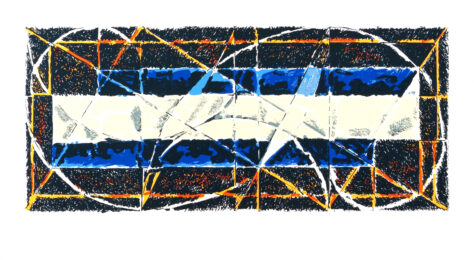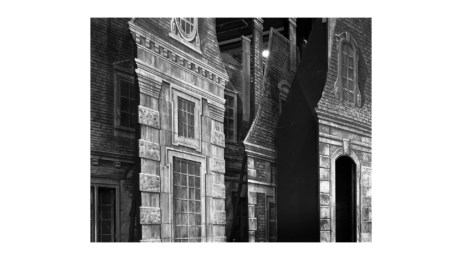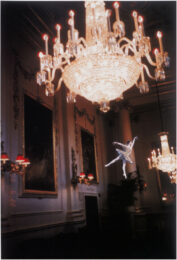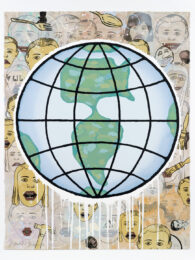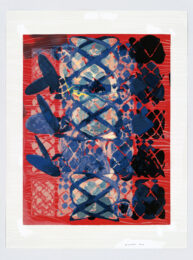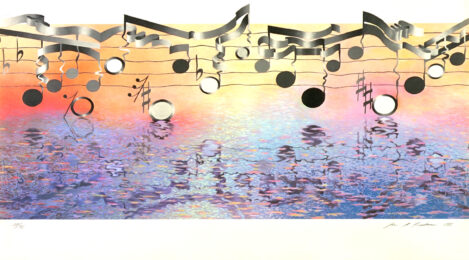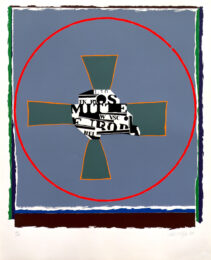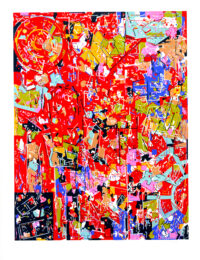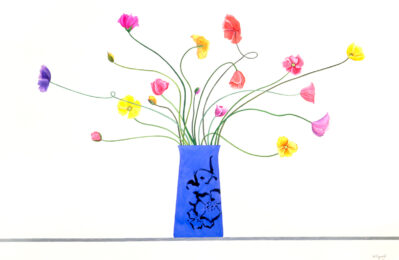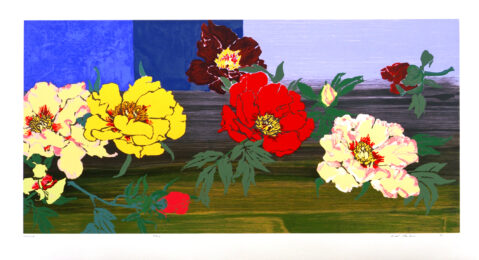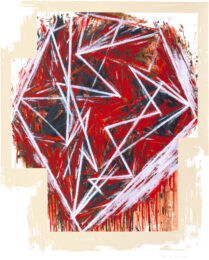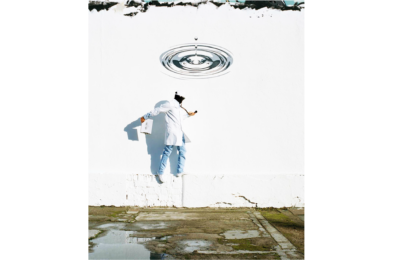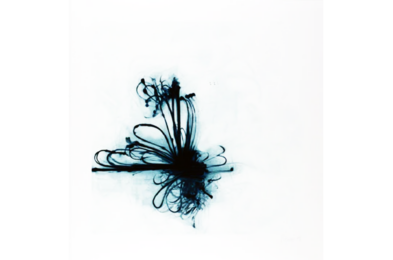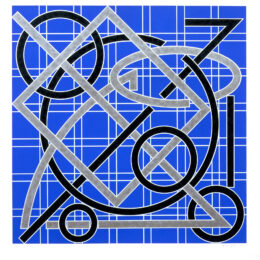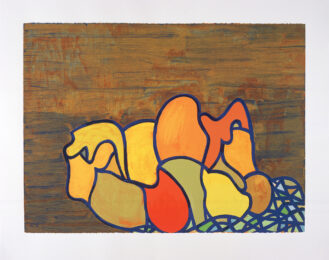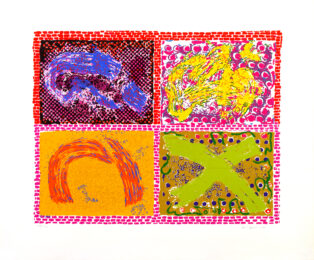Details — Click to read
A 30 color screen print created to commemorate the September 11, 2001 attacks in New York City.
“Jules Olitski was born Jevel Demikovsky in Snovsk, Soviet Russia, on March 27, 1922. He emigrated to the U.S. as an infant with his mother, Freida and they settled in Brooklyn. In 1940, he was admitted to the National Academy of Design in New York City, where he studied life drawing and portrait painting with Sidney Dickinson (1890-1980). In the evenings, he studied sculpture at the Beaux Arts Institute.
After being discharged from the U.S Army in 1945, Olitski studied sculpture in 1947 under Chaim Gross (1902–1991) at the Educational Alliance, and two years later, moved to Paris on the G.I. Bill, where he studied with sculptor Ossip Zadkine (1890–1967), then at the Académie de la Grande Chaumière.
In 1963, Olitski joined the faculty of Bennington College in Vermont, where painter Paul Feeley and sculptor Anthony Caro taught, and Kenneth Noland lectured. The following year, he was included in Post-Painterly Abstraction, an exhibition curated by Greenberg for the Los Angeles County Museum of Art. Olitski’s “Curtain” paintings were showcased in Three American Painters: Kenneth Noland, Jules Olitski, Frank Stella, an exhibition curated by Michael Fried at Harvard’s Fogg Art Museum in 1965.
During a class at Bennington late in 1964, Olitski and Caro brought a group of students to visit Kenneth Noland’s studio, where Caro explained “that what he wants to emphasize in his sculpture was the materiality, the density of the medium.” Olitski replied, “half-jokingly, that what I was looking for was the complete opposite: a spray of color in the air that stayed there, suspended. Just that.” To realize this vision, Olitski acquired an air compressed spray gun and embarked on a new method of painting, in which he laid a length of unstretched, unsized canvas on the floor and sprayed colors into each other and across the surface. He then determined the size and shape of the painting afterward by cropping the edges from the larger canvas. In 1966, Olitski was one of four American artists selected by curator Henry Geldzahler to exhibit at the XXXIII Venice Biennial that June. Early the following year, his spray painting Pink Alert (1966) won first prize at the 30th Biennial Exhibition of Contemporary American Painting at the Page 1 of 2 Corcoran Gallery of Art in Washington, DC. His “Spray” paintings were included in His work was included in documenta IV in 1968.
In 1969, Olitski became the first living American artist to be given a solo show at the Metropolitan Museum of Art, when his first series of sculptures were shown. Olitski continued to work on large-scale constructed sculpture throughout his career, working in Corten steel, clay, and aluminum in the 1970s; Plexiglas in the 1980s; and with repurposed cement mixers in the 2000s. Olitski’s sculpture was the subject of a retrospective at the Boston MFA and Hirshhorn Museum in 1977. He executed two portfolios of silkscreens, Graphics Suite #1 and #2 with the Chiron Press in 1970.
Throughout the 1970s, Olitski experimented with newly developed acrylic gels, pastes, and mediums, using brooms, mops, and other unconventional tools to apply paint. Paintings from this period are characterized by textured surfaces with underpainting, impasto, chiaroscuro, tinting, and glazing. Olitski’s first museum retrospective was organized by Kenworth Moffett of the Boston Museum of Fine Arts in 1973, traveling then to the Albright-Knox in Buffalo, the Whitney Museum in New York, and finally the Pasadena Museum of Art. He purchased a home on Bear Island on Lake Winipesaukee near Meredith, New Hampshire, then in 1974, built a studio on the property, spending summers there and winters at his home in Islamorada, Florida.
In the 1980s, Olitski began using iridescent and interference pigments which shift in hue and temperature from different vantage points, working first on shaped Plexiglas before returning to canvas. In the thick acrylic gel surfaces of his late ’80s “Mitt” paintings, effects of chiaroscuro modeling are literalized by the interaction of sculpted low-relief surfaces and sprayed pigment. Beginning in the mid-90s, Olitski began drawing and painting from nature at both of his waterfront studios, eventually sliding between abstract and representational modes, often blending the two together in a painterly synthesis of naturalistic effects. From the mid-90s onward, he continued working on landscapes, life drawings, and printmaking in addition to his painting practice.
Following a life-threatening cancer diagnosis and surgery early in 2000, he embarked on a series of ferocious painterly works in high-keyed color that synthesized and amplified the surface effects and color interactions he had developed for decades. Jules Olitski died, aged 84, on February 4, 2007.” – Jules Olitski Foundation

